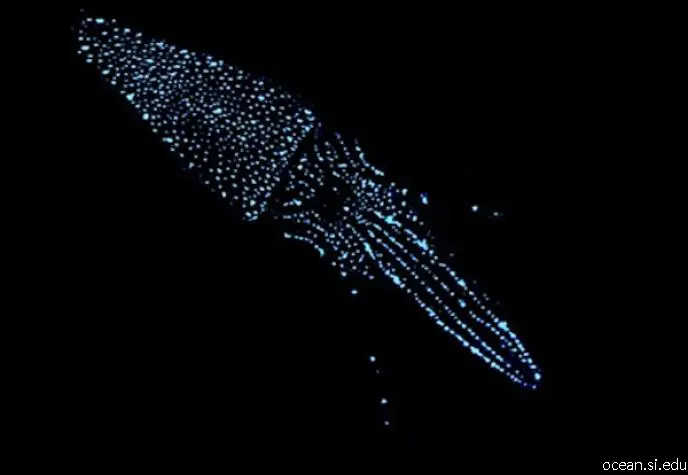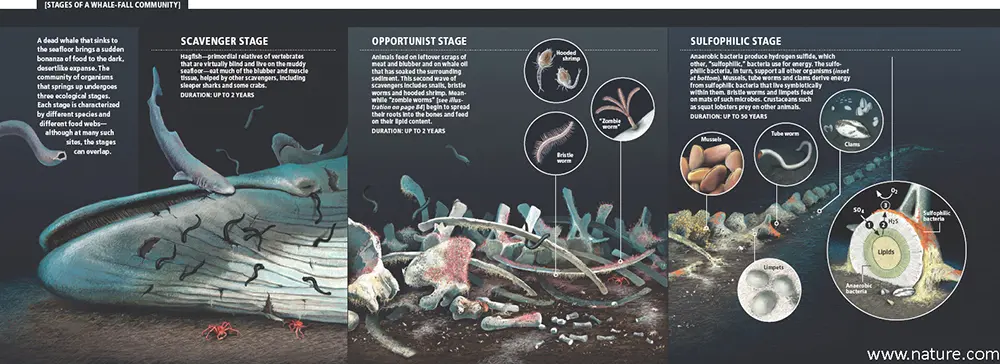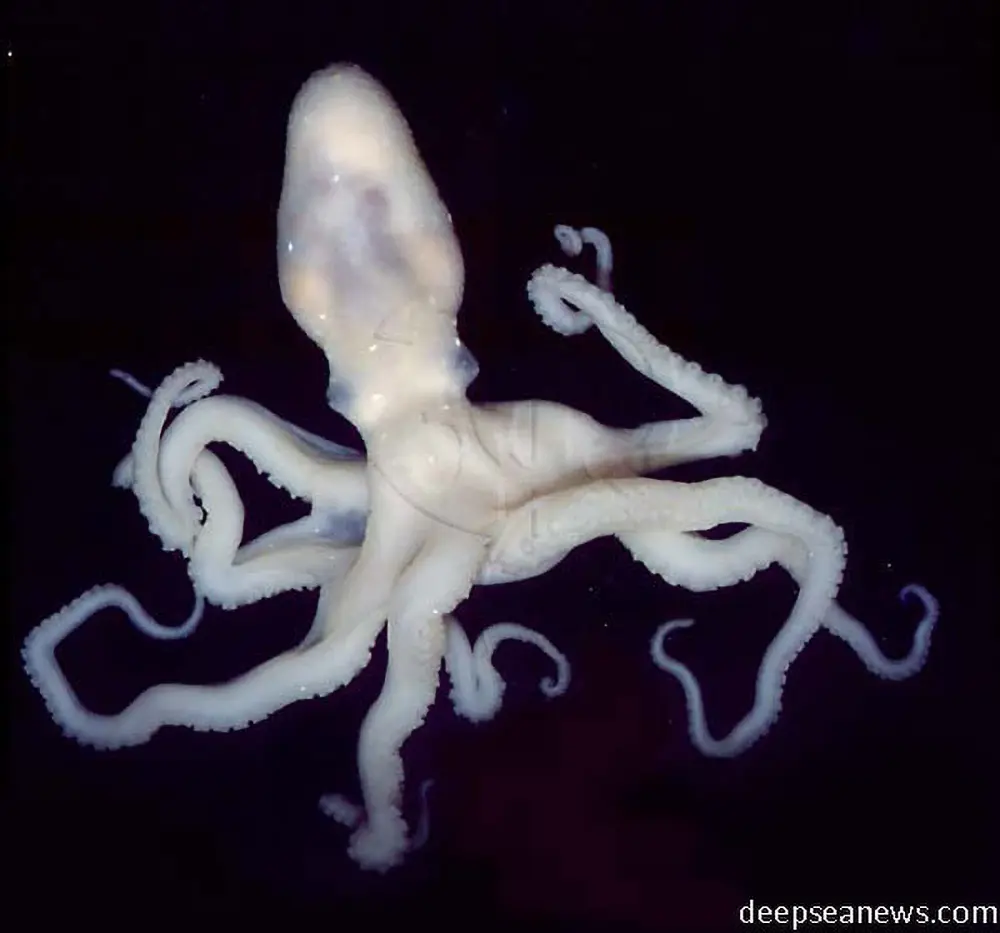The ocean is a huge place, so big in fact that our planet is called the blue planet. We know by looking at a world map that the ocean takes up more space than land, but what about beneath the surface? According to Blue Planet Seas of Life, a BBC documentary, “Over 60% of our planet is covered by water more than a mile deep. The deep sea is the largest habitat on earth and is largely unexplored. More people have traveled into space than have traveled to the deep ocean realm…”
Officially, the deep sea starts around 200m where there is not enough sunlight for photosynthesis, processing sunlight into energy, to take place. Below 1,000m there is basically no sunlight. Many animals have adapted to this lack of sunlight. Some creatures, like the stout blacksmelt, are equipped with gigantic eyes to capture the minimal amounts of light that cannot be seen by most animals. Some animals use bioluminescence, a chemical reaction within the animal that creates light. There are 6 potential reasons why animals use bioluminescence:
- Headlights – these animals have lights that point straight ahead to illuminate potential prey in front of them, like the lanternfish.
- Light patterns – used to attract mates
- Fishing – using a lit lure to catch prey, like the anglerfish
- Counterillumination – using light on their bellies to blend in with the small amounts of sunlight above which makes them invisible to any animals below
- Confusion – using light to stun or confuse prey or even using decoys like bomber worms
- Alarms – these animals illuminate their attackers so bigger predators will see them and chase them off. Some sea cucumbers can cover their attackers in a glowing sticky substance that make them visible to other predators.

Bioluminescence is usually blue or green, since these are the colors that penetrate the deepest. Most animals in the ocean, especially the deep sea, have trouble seeing red light or cannot see it at all. Some deep sea animals, like the dragonfish, can produce their own red light. This is the ocean equivalent of night vision – they can illuminate everything in front of them in a bright red light that is invisible to their prey. Other adaptations include:
- Body Color – most animals are transparent, black, or even red.
- Reproduction – some animals have extreme reproduction methods. The female anglerfish is the big scary one that is usually in pictures. The male is very tiny and when it finds a female, he bites her and eventually fuses his body to the female so she can mate whenever she wants.
- Gigantism – Some animals in the deep sea that have counterparts in the shallows are much bigger, like the giant squid, giant isopod, oarfish, and giant amphipod
- Long Lives – many organisms in the deep sea can live for decades, even centuries. There is a deep sea coral colony near Hawaii that is over 4,000 years old.

Two of the main deep sea habitats are whale falls and hydrothermal vents. When a whale dies in the open ocean, it sinks to the bottom. There are three stages of decomposition:
- Scavengers, such as sleeper sharks, amphipods and hagfish, start eating the tissue. They can eat over 50 kg per day for about two years. Typically the whale can be stripped of its meat in months.
- Opportunists show up, including worms, crustaceans, molluscs, and other invertebrates. These animals feed directly on the bones and the sediment around the bones. This stage can last for a few years as well.
- Bacteria colonize the whale fall. Most of the food that is easily digested is gone so the bacteria break down lipids in the bones and create hydrogen sulfide, which other bacteria use for energy, providing food for mussels, clams, limpets, snails, as well as other animals. Because of the large amounts of lipids, this stage can sometimes last over 50 years, with some lasting over 100.

Hydrothermal vents are some of the craziest habitats in the world. Water penetrates into fissures in the bottom of the ocean, is heated by magma, and then reemerges from vents at temperatures of over 340 C. The pressure is so extreme that the water does not boil. Believe it or not, entire communities live around these vents. Instead of photosynthesis, bacteria are using chemosynthesis, converting minerals form the water to energy, providing food and nutrients to other organisms, such as shrimps, crabs, tubeworms, snails, even small octopus. There are two kinds of vents. White smokers emit lighter colored minerals such as calcium and silicon and have lower temperatures. Black smokers are usually high in sulfur. Some bacteria can convert heat, methane, and sulfur into energy as well. There are even bacteria in Mexico that use the glow of a black smoker for photosynthesis, the first organism discovered to use light that is not sunlight for photosynthesis!

Stay tuned for next time when I write about the ugliest and scariest deep sea creatures!
Your marine biologist/Daniel







